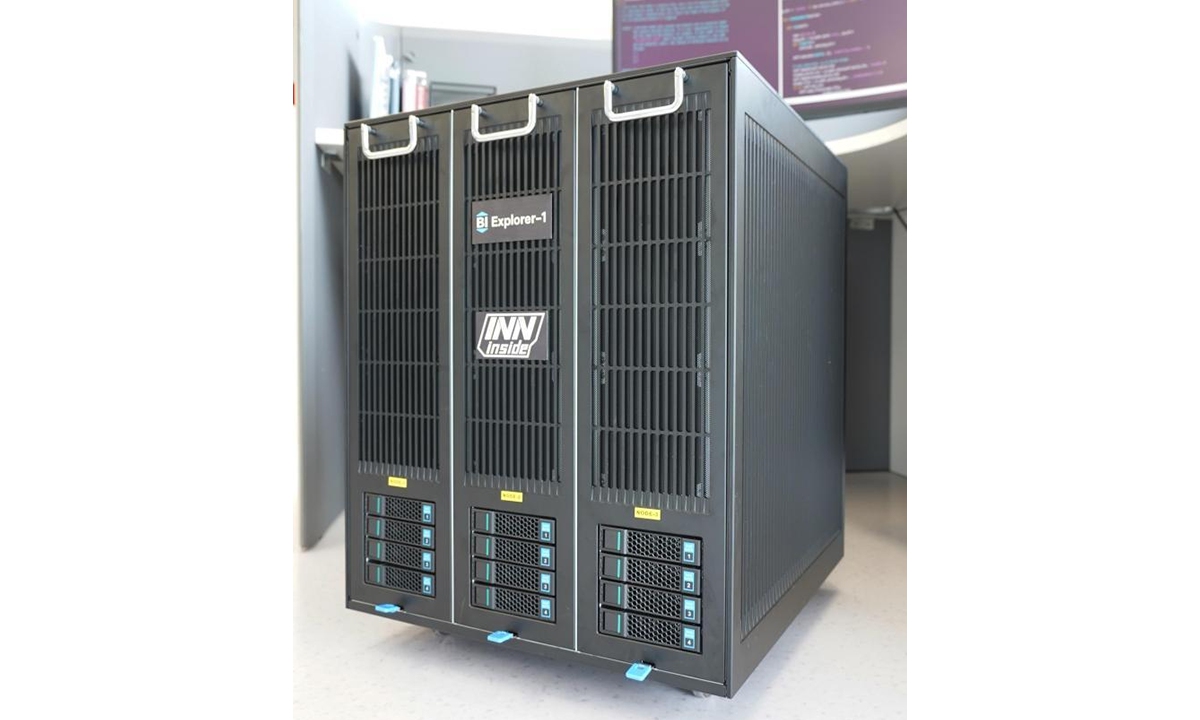China’s first brain-like intelligent computing body, named “INN inside computing body”, was officially launched in the Guangdong-Macao in-depth cooperation zone in Hengqin on Friday, marking a milestone in the integration of supercomputing power into a compact device, according to a report in the Science and Technology Daily.
Described as the world’s first brain-like intelligent computing body, INN inside computing body compresses supercomputer capability into a refrigerator-sized unit by deploying an original intuitive neural network and brain-like algorithm. In doing so, the device not only accomplishes highly integrated supercomputing performance, but it also provides a new pathway for enhancing energy efficiency in traditional supercomputing centers and intelligent compute clusters.
According to Science and Technology Daily, the system integrates 1,152 CPU cores, 4.8 terabytes of DDR5 memory and 204 terabytes of storage within an extremely compact space. Remarkably, the device maintains running noise at below 45 decibels and consumes only one-tenth the power of conventional supercomputing devices. Even under maximum load, the system’s temperature remains stably below 70C.
“The effect is like placing the collections and retrieval capacity of a large library into your home bookcase, and moreover that bookcase is extremely energy-efficient and quiet,” said Nie Lei, Director of the Joint Laboratory of Intelligent Computing Systems at the Guangdong Institute of Intelligent Science and Technology, as reported by Science and Technology Daily.
The core breakthrough of INN inside computing body lies in its unique brain-like algorithm based on an intuitive neural network. The system uses a learning network that unifies numerical and symbolic representations, highly simulating human-brain computing mechanisms. It integrates symbolic computation with a data-driven ternary-logic brain-like model, enabling high-speed, high-efficiency training and inference of various models — including large-scale ones, according to Science and Technology Daily.
“Traditional AI is like a ‘black box’ — it just gives an answer without stating the reason. Our algorithm gives AI the ability to ‘reason’. It not only makes a judgment but can explain why the judgment is made,” explained Cai Jiang, Director of the Joint Lab of Cognitive Neural Networks and Degeneration at the Guangdong Institute of Intelligent Science and Technology, in a Science and Technology Daily interview.
This capability allows INN inside computing body to master patterns with minimal data input, to continue learning new knowledge without forgetting old skills, and to handle multiple modalities of information simultaneously — text, image, sound and more, Cai said, according to Science and Technology Daily.
In actual performance testing, INN inside computing body demonstrated outstanding results. On a single-node CPU basis, it completed a training task involving tens of billions of tokens in only 30 hours. The training and inference speeds reached 100,000 tokens per second and 500,000 tokens per second respectively — performance comparable to traditional compute clusters that require multiple high-end GPUs, Science and Technology Daily reported.




